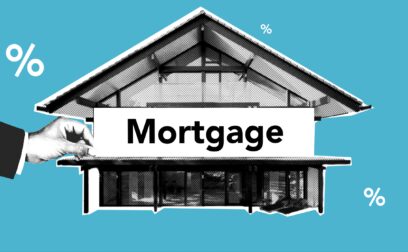If you want to invest in a property development project and don’t have much cash lying around, it’s likely you’ll need to apply for property development finance to get your project started.
This guide takes a detailed look at the options available to you so that you can decide which type of finance best suits your financial position and the type of property you’re looking to buy.
How does property development finance work in Australia?
Property development finance is an umbrella term used to cover a range of different finance options that can help you to buy a property you want to develop, refurbish or convert or even to help you build a property from scratch. Development finance can cover term loans, bridging loans and commercial mortgages.
Bear in mind that eligibility criteria can vary depending on the type of finance you require. Some lenders will focus heavily on your personal credit score and financial circumstances, while others will prefer to look at your business plan. Be sure to check the eligibility criteria closely before you apply for property development finance, as you might be better suited to certain options.
Private property development finance
If you’re looking to invest in private residential property, private property development finance can offer the funds you require. You can apply for this type of finance whether you’re a private individual, residential property developer, or property or building company.
It’s worth having a detailed investment strategy in place before you apply as this can increase your chances of success and help you secure a more competitive interest rate.
First-time property development finance
If you’re applying for property development finance for the first time, it’s crucial that you do your research and consider which option is best suited to your circumstances. For example, if you’re looking to buy a property to rent out, you’ll need a buy-to-let mortgage. But if you want to buy a property before selling an existing one, a bridging loan could be more suitable.
Bridging loans are short-term loans and can also be useful for short-term refurbishment projects. You can then repay the loan and interest once you’ve sold the property. If you’re carrying out more extensive renovations, you can take out a longer-term bridging loan or a commercial mortgage might be more suitable.
Before you start any property development project, be sure to carry out some research in the local area first so that you are aware of current market trends and demand.
Building development loans
A building development loan can help assist with the purchase costs and build costs associated with a residential or commercial development project. These loans usually have terms of between six months and three years and it’s common to receive the funds in stages as the project build progresses.
Commercial mortgages
Commercial mortgages are used to buy commercial property such as shops, offices and warehouses. They work in a similar way to residential mortgages but the value of the property is usually higher.
Commercial mortgages are often the cheapest way to borrow because the property is used as security against the loan, making it less risky for the lender. It can be easier for a more established business to secure a commercial mortgage, but it’s certainly possible for smaller businesses to get accepted for one too, particularly if you have a good credit history.
You can usually take out your mortgage over a term of between three and 25 years and you will typically need a deposit of between 20% and 40%. In some cases it’s possible to secure 100% of the finance using additional security, but you will also need to have a solid trading record and undergo enhanced affordability checks.
Commercial mortgages vs. buy-to-let mortgages
Buy-to-let mortgages are for residential property only. But if you’re a buy-to-let landlord looking to diversify your property portfolio, you might be considering investing in commercial property. Commercial mortgages are for non-residential properties but can also be used for semi-commercial property that has mixed commercial and accommodation areas. For example, if you buy a shop with a flat above it.
A residential property investor can also use a commercial mortgage to buy several properties to rent to tenants, enabling you to save money on arrangement fees and only have one lender to deal with.
Auction finance
If you’re thinking of buying property through an auction, some lenders specialise in auction finance. Buying a property at auction can be cheaper and the timescales are usually much shorter too. However, this also means you’ll need to secure funding fast – you’ll usually need to stump up the funds within 28 days of buying the property.
Lenders that offer auction finance will often be able to provide the cash quickly. Sometimes this can be within a week, but some lenders will even give you finance before you attend an auction so you’ll have an ‘agreement in principle’ ready to go.
Bridging finance or development finance
Bridging or development finance tends to mean any short-term funding that can help cover building and development costs. Although they are similar, there are differences between the two options.
Bridging loans are generally used for more urgent property transactions and used to cover a short-term need. As mentioned earlier, you might use bridging finance to help you buy a property before selling your current one, or to fund a property refurbishment or conversion project.
Development finance, on the other hand, is specifically used to fund property development projects. Often these are ground-up schemes where a property is built from scratch and it’s usually only used during the construction phase.
The term of each loan will usually be driven by how long it is likely to take for the project to be completed. In the case of a bridging loan, this is usually when the property is sold, while for development finance it’s when the property has been built. Terms can be for up to three years.
Second charge loans
Second charge loans, or second charge mortgages, enable you to use the equity in your existing commercial property as security for another loan with another lender. The second lender takes second priority to the first lender, so you’ll need to pay off the first mortgage repayments before the second. It also means that if the property ever needs to be sold, the first lender will have first call on equity in the property.
The equity released from taking out the loan can enable you to expand your business.
What affects the amount of finance you need?
Before applying for any form of property development finance to help cover refurbishment works, you need to consider how extensive this work will be. This will help you to determine how much money will be required.
Light refurbishment
This is the simplest type of project and the main changes are likely to be aesthetic rather than structural. There might be some internal work on the walls, floors and ceilings. For this type of project, you’re unlikely to need to borrow a huge sum of money and you can usually turn around the property in a short timeframe using auction or bridging finance.
Full refurbishment
If you’re carrying out a full refurbishment, you’ll be making both aesthetic changes and structural ones. This could involve knocking down internal walls, building an extension or even demolishing part of the property and rebuilding it. As a result, the amount of funding you’ll require will be considerably higher and you’ll need to borrow over a longer term. You could consider longer-term bridging finance or short-term commercial mortgage finance.
Complete building
This is the most extensive property development and involves starting from scratch. This usually means buying an empty plot of land but could involve buying land with remaining stonework from a previous building that you then convert. This type of project will also require a significant amount of financing and will need to be taken out over many months or years. Finance is often released in stages until the project is completed.
How do I find property development finance?
As with any type of financial product, it’s crucial that you shop around and compare your options carefully. Some high street banks will offer certain types of development finance, but you’ll generally find a greater range of options through specialist online lenders.
Many lenders require a substantial amount of documents when you come to apply for your loan, so it’s sensible to be prepared and make sure you have the following paperwork to hand:
- Details of planning permission
- Details of any planning restrictions or levies that could impact profitability
- Complete breakdown of all project costs
- Schedule of works broken down by phases
- Details of architects and contractors
- List of borrower’s current assets and liabilities, plus projected expenditures during the project
- Proposed exit strategy
- Projected gross development value – what will it be worth when completed?
Contact Swoop today to arrange a confidential discussion about your financing needs and we can help you find the best deal for you and your financial circumstances. Apply now.






 yet? Register here!
yet? Register here!